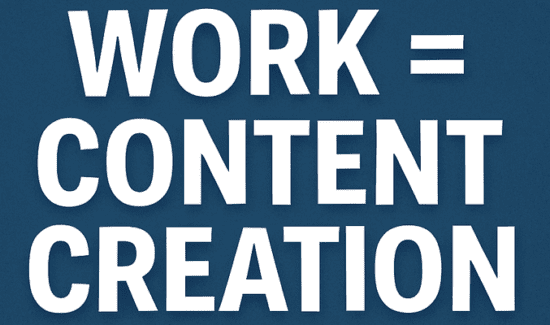Empathetic AI: The Catalyst for Employee Retention and Satisfaction

To help companies remain competitive amidst changing markets, the Solutions Review editors are exploring how an Empathetic AI mindset has the potential to transform employee retention and satisfaction (for the better!).
The corporate world’s relationship with artificial intelligence has been predominantly transactional, with a focus on efficiency gains, cost reduction, and process optimization. However, there are rumblings of a paradigm shift toward an Empathetic AI (EAI) framework for AI implementation, where the priority becomes less focused on traditional KPIs and more engaged with how these technologies affect humans. This mindset represents one of the most underexplored pathways to solving a persistent challenge in the modern workplace: employee retention and satisfaction.
What Does it Mean to Redefine AI’s Role in Human-Centric Organizations?
Traditional AI deployments treat employees as variables in an optimization equation. However, EAI aims to flip that dynamic by positioning AI as an emotional intelligence amplifier instead of a replacement mechanism. This approach recognizes that employee retention and satisfaction stems not from perfect processes, but from feeling understood, valued, and cognitively supported in their work environment. It’s a sentiment employees want to share, too. For example, over 70 percent of employees who participated in a survey from PwC say that GenAI tools “will create opportunities to learn new skills at work, be more creative at work, and improve the quality of their work.”
The tension comes from the discrepancy between those sentiments and the real-world happenings. You don’t have to look far to see reports and predictions about AI displacing workers. A 2025 report by Bloomberg Intelligence said, “Global banks are expected to cut about 200,000 jobs due to artificial intelligence.” In even broader terms, the World Economic Forum (WEF)’s Future of Jobs Report says that 41 percent expect to downsize their workforce as the ability for AI to “replicate” roles expands. Those statistics don’t inspire confidence in the workforce, and the resulting uncertainty can seriously affect businesses and their workers.
The fundamental proposition of Empathetic AI (EAI) is that AI systems designed with empathetic frameworks can create more psychologically safe workplaces than many human-managed environments. It’s not about AI replacing human empathy but about creating consistent, bias-free emotional support structures that complement the human workforce. AI should lift your employees up, and EAI is a pathway to doing precisely that.
Using AI as a Tool to Reprioritize Employee Retention
At first blush, it might sound counterintuitive to frame AI as a tool for improving employee retention, especially since it’s often touted as a reason for employee displacement. That’s something the EAI framework strives to address, as it reinforces AI’s role as a supplementary force to the human workforce. When deployed correctly, AI can streamline how employees work by identifying potential pain points, proposing solutions, and supporting workers by freeing them to focus on tasks that are more valuable for the business and the individual. Here are a few examples.
Personalized Stress Detection and Intervention
Thoughtfully configured AI systems can analyze communication patterns, work rhythms, and engagement metrics to identify early stress indicators before they escalate to burnout. Unlike human managers, who may miss subtle cues or have their own biases, an empathetically minded AI system can provide consistent emotional monitoring that adapts to individual employee communication styles and stress manifestations. The system can then alert managers when it identifies employee workflows that meet the pre-determined criteria, providing an opportunity for both manager and employee to connect and address potential friction in their workflow.
The retention impact is profound: employees who feel their well-being is proactively supported will likely feel more committed and invested in their job. Making that a priority is more essential than ever, especially when most executives inaccurately believe that their workforce’s well-being is more positive than it is, as reported by a Deloitte study from 2023. Empathetic AI can help bridge that gap by providing decision-makers with actionable employee insights that drive meaningful conversations, changes, and productivity increases.
Adaptive Career Development Through Empathetic Analysis
EAI can help team leaders analyze not just what employees say about their career goals, but how they express frustration, excitement, or disengagement in their current roles. By processing linguistic patterns, work output quality fluctuations, and collaboration dynamics, EAI systems can identify career development opportunities that align with genuine employee interests rather than algorithmic job matching. This creates a retention advantage by addressing the primary reason employees leave: lack of growth opportunities that resonate with their authentic professional desires.
Upskilling is becoming a pillar of “future of work” discussions, and that’s another area EAI can bolster. By gathering the above data, companies can pinpoint what departments need reskilling or upskilling and provide the necessary resources. The goal isn’t to find roles that can be cut but to find the workflows that can be optimized or reconfigured for maximum efficiency and, consequently, improve employee satisfaction by equipping them with more rewarding work.
Emotional Labor Distribution
In many organizations, emotional labor—the invisible work of managing team dynamics, client relationships, and organizational culture—falls disproportionately on certain employees. EAI can assume portions of this emotional labor by managing routine interpersonal coordination, conflict prevention, and stakeholder communication. That redistribution allows employees to focus their emotional energy on genuine relationship building and creative collaboration rather than maintenance tasks.
How to Create an EAI Implementation Architecture for Maximum Impact
Creating an effective, human-first architecture for AI deployment requires companies to abandon top-down AI implementation strategies in favor of an “emotional infrastructure.” This approach makes empathy a feature and a foundational design principle that permeates every AI system interaction. Ideally, organizations will implement EAI through three interconnected architectural layers:
- The sensing layer (emotional data collection and pattern recognition).
- The reasoning layer (contextual interpretation and response generation).
- The intervention layer (personalized support delivery).
The critical insight is that these layers must operate with different transparency levels. For example, employees should be fully aware of intervention-layer activities even as the sensing layer operates more subtly to avoid creating performative behavior that undermines authentic emotional expression.
Make Uncertainty a Feature, Not a Bug
Traditional AI systems strive to achieve the “right” answer, but EAI systems are built around the idea that there is no single “right” answer or solution. As a result, EAI optimizes for the “appropriately nuanced” response that acknowledges the complexity of human emotional states. This means building systems that can hold multiple contradictory emotional interpretations simultaneously and respond in ways that validate rather than resolve emotional ambiguity.
Curate Transparent Emotional Intelligence Systems
The most effective EAI implementations will be fully transparent about their capabilities and limitations. Employees should understand exactly how their emotional and behavioral data is being processed and have control over the level of AI intervention they receive. These systems should also include deliberate “empathy uncertainty” protocols that address moments when the AI explicitly acknowledges it cannot fully understand the human experience and gracefully transfers to human support.
Paradoxically, acknowledging uncertainty can create more trust in an AI system, as it shows the human user that the system is not trying to be something it’s not. Another factor to include is “emotional privacy zones,” where certain types of emotional data are processed locally and never stored centrally, creating technological boundaries that mirror healthy interpersonal emotional boundaries.
Develop Human-AI Emotional Collaboration Models
Rather than replacing human empathy, the most successful EAI systems will augment human emotional intelligence. AI handles pattern recognition and consistency, while humans provide authentic connection and complex emotional reasoning. One way to accommodate that collaboration is with opt-in escalation pathways that allow employees (and customers) to escalate a situation from AI support to human intervention when needed.
In an article on Forbes, Shay David—co-founder, chairman, and CEO of retrain.ai, a responsible AI-driven Talent Intelligence Platform—says, “A proactive HR leader will capitalize on AI-driven insights to spot that opportunity and present it to the employee, offering a new challenge and possibly keeping them from looking elsewhere.”
Introducing Emotional Efficiency into the AI Frontier
One key to successfully making empathy a pillar of this evolving “AI frontier” is to make AI something that employees don’t consciously interact with but unconsciously benefit from. That’s the core of the Empathetic AI movement: it’s a fundamental shift from viewing AI as a replacement technology to understanding it as an amplification technology for human flourishing. The organizations that master this approach will likely achieve sustainable competitive advantages in talent retention and workplace satisfaction.
The ultimate test of EAI success won’t be measured in traditional metrics like efficiency or cost reduction, but in whether employees feel more human, not less, in AI-augmented workplaces. This represents perhaps the most sophisticated challenge in modern organizational design: using artificial emotional intelligence to create more authentic human experiences that encourage employee retention, maximize satisfaction, and inspire confidence in the future.





